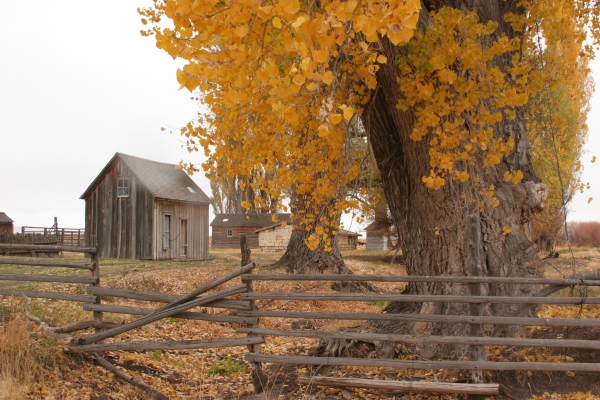
Many of the important historic sites located on FWS lands are open to the public and offer some level of interpretation. At Malheur National Wildlife Refuge, the Refuge provides a variety of modern media to convey information to visitors and to enhance self-guided experiences such as a range of indoor and outdoor interpretive panels at Refuge headquarters and along the Blitzen Valley Auto Tour Route. Two historic places, which are Points of Interest are the historic P Ranch and Sod House Ranch.
Visit the following places to enhance your experience and as you wander about the ranches, imagine what sights, sounds, and smells you would have encountered during your visit to the 1880s ranching empire.
Please observe and follow Refuge Rules and Policies for your safety and to protect wildlife and their habitat.
Trail Etiquette
- Dispose of all trash and animal waste in trash receptacles
- Pets must be kept on a leash
- Stay on the trail, and respect plants and wildlife
- Leave natural objects such as plants, animals, minerals, antlers, and objects of antiquity
- Yield to pedestrians; many Refuge routes are multi-use trails
History and Historic Places
History
In 1872, Peter French with 1,200 head of cattle, six Mexican vaqueros, and a cook headed to Oregon from California under the direction of Dr. Hugh Glenn to begin building a vast cattle empire. Once he entered the lush Blitzen Valley, French’s search for new grazing land was over. He established a headquarters for the French-Glenn Livestock Company, at the south end of the valley known as the P Ranch. As the herd grew, more land and water was required. French established Sod House Ranch on the south side of Malheur Lake to maintain control of the land at the north end of the main ranch. It was an ideal location for summer livestock grazing. At the peak of its operation, the French-Glenn Livestock Company was the largest cattle ranch on private property in the United States.
Historic P Ranch (open year-round)
Only a few of the original structures are still standing today. The P Ranch round barn is no longer standing but a similar round barn still stands at Barton Lake, the Peter French Round Barn operated by the State Parks. Peter French was the first rancher in the basin to harvest native hay for winter feed. His ranch operations were a blend of the traditional Texas “open range” system and the more sedentary European stock farming techniques. Visit the area to still see the standing long barn used for storing hay, beef wheel, and tripod for the hay derrick.
Historic Sod House Ranch (open August 15 - October 1)
At the height of its heyday, there were over 16 structures each with a function and purpose in providing food and the necessities required for ranch operations. Some of these structures are still standing. The map in the Historic Sod House Ranch Brochure shows the original ranch layout during the 1890s. In 1979, the Sod House Ranch was listed on the National Register of Historic Places as it represents an intact 1880s-era ranch. The cottonwood trees here at the ranch were planted in the 1890s and provide nesting habitat (a rookery) for colonial waterbirds such as cormorants, egrets, herons, ibises, and night herons. It may consist of just a few nests to hundreds of nesting pairs. While birds do not share individual nest duties, the collection of nests in a small area gives nesting birds and vulnerable chicks extra protection and advantages. To safeguard the rookery and its avian residents, the Sod House Ranch is closed to visitors during the nesting season.


